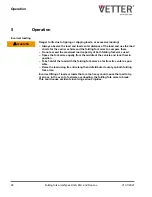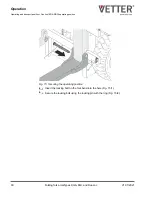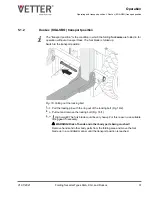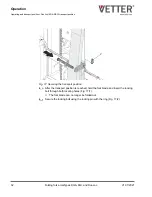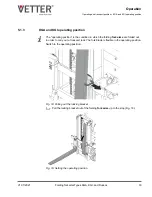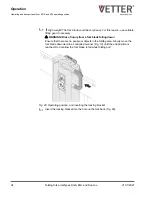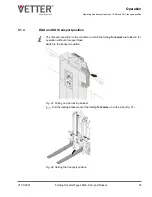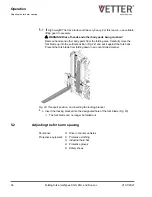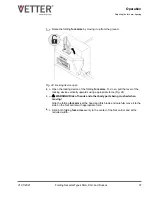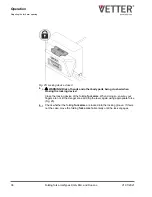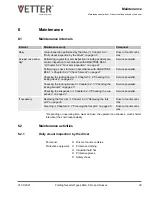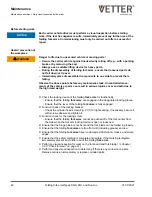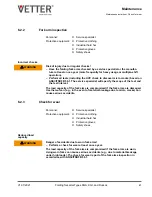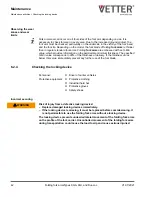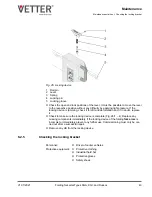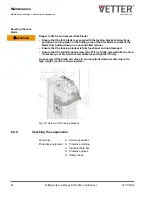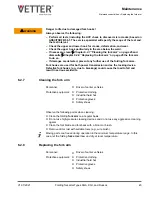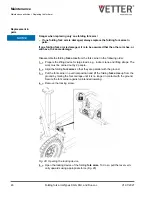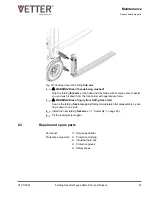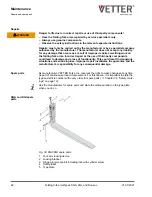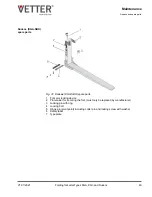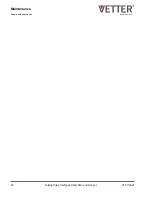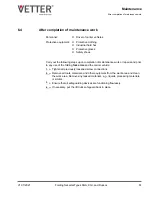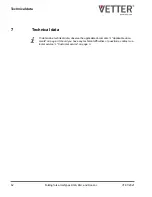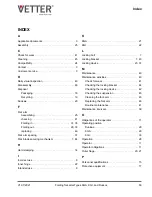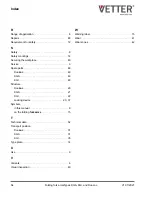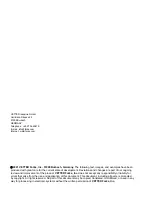
Fork arm wear can occur on all four sides of the fork arm depending on use. It is
necessary to check for wear in every area. Due to the increased ground contact, the
fork arm must be checked, particularly on the underside in the vicinity of the fork bend
and the fork tip. Depending on the model, the fork blade of folding fork arms is thinner
than in regular standard fork arms. Folding fork arms are embossed with an S-Min
value, which provides information on the permissible minimum thickness. The specified
S-Min value corresponds to 90% of the thickness at delivery. If the thickness drops
below this value, immediately prevent any further use of the fork blade.
6.2.4
Checking the locking device
Personnel:
n
Driver of carrier vehicles
Protective equipment:
n
Protective clothing
n
Industrial hard hat
n
Protective gloves
n
Safety shoes
Risk of injury from a defective locking device!
– Replace damaged locking devices immediately.
– If the locking device is missing, it must be replaced before commissioning. It
is not permissible to use the folding fork arms without a locking device.
The locking device prevents undesired lateral movement of the folding fork arms
on the profile of the fork carrier. Uncontrolled movement of the folding fork arms
during transportation could cause the load to slip and cause serious injuries!
Observing the wear
zones and wear
limits
Incorrect securing
L
WARNING
Maintenance
Maintenance activities > Checking the locking device
V1.07/2021
Folding fork armsTypes KGA, KGI, and DuoLoc
42

